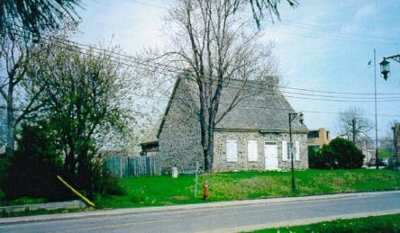LeBer-LeMoyne House National Historic Site of Canada
Lachine, Quebec

General view
(© Parks Canada Agency \ Agence Parcs Canada, 2001.)
Address :
1 Musée Road, Lachine, Quebec
Recognition Statute:
Historic Sites and Monuments Act (R.S.C., 1985, c. H-4)
Designation Date:
2002-11-01
Dates:
-
1669 to 1671
(Construction)
-
1669 to 1685
(Significant)
Event, Person, Organization:
-
Charles Le Moyne
(Architect)
-
Jacques Le Ber
(Architect)
Other Name(s):
-
LeBer-LeMoyne House
(Designation Name)
-
Lachine Museum
(Other Name)
-
Le Ber-Le Moyne House
(Other Name)
Research Report Number:
2001-027, 2002-003A, 2002-003B
Plaque(s)
Existing plaque: Corner of Musée and Saint-Patrick Streets 1 Musée Road, Lachine, Quebec
Constructed between 1669 and 1671, the Le Ber-Le Moyne house and its outbuilding are among the oldest remaining structures linked to Canada's fur trade. Jacques Le Ber and Charles Le Moyne, two wealthy fur traders living in Montréal, established this trading post at a commercial gathering place already frequented by Aboriginal people. With its small scale, asymmetrical façade and sense of harmony, the Le Ber-Le Moyne house remains a fine example of the rural domestic architecture of New France.
Description of Historic Place
LeBer-LeMoyne House National Historic Site of Canada is a 17th-century former fur trading post located on a small headland beside the Lachine Canal on the grounds of the Lachine Museum in Montreal. Both the main and subsidiary buildings are modest fieldstone structures with steeply pitched roofs. The formal recognition refers to both buildings on their associated properties.
Heritage Value
This site was designated a national historic site of Canada in 2002 because:
— the LeBer-LeMoyne House and the dépendance are the oldest known extant buildings associated with Charles LeMoyne and the fur trade during the French Regime.
LeBer-LeMoyne House National Historic Site of Canada was built for Jacques LeBer and Charles LeMoyne as a fur trade post in 1669-1671. They operated the post until 1685. In 1689 the house was damaged by fire, and its trading location was abandoned in 1695. Between 1695 and 1946, LeBer-LeMoyne House was subject to a series of renovations for use as a residence. The City of Lachine acquired it in 1946 and renovated it as a museum. Today the property consists of the house proper, its rear annex and the dépendance outbuilding, a separate utility building constructed at the same time as the house.
The heritage value of LeBer-LeMoyne House resides in the historical period and activity to which it bears witness, and in the fact that it is the only complete structure with Charles Le Moyne. The site played a role in the fur trade during the French Régime, as illustrated by the form, composition, site, and setting of both the house and the outbuilding.
Sources: Historic Sites and Monuments Board of Canada, Minutes, January 2005, 2002, November 2001.
Character-Defining Elements
Key elements that contribute to the heritage character of the site include:
— the setting on a small headland on the Lachine Canal west of the historic City of Montréal on the former major inland transportation route;
— the grouping of small-scale buildings on their property with the house facing the canal (once the river) and the outbuilding at right angles to its rear;
— the T-shaped footprint of the house with its rear annex, and the rectangular footprint of the dépendence;
— the one-and-a-half-storey, cube-like massing of the house under a steeply pitched roof with projecting chimneys;
— the symmetrical definition and placement of apertures on the house;
— the narrow three-pane transom above the door of the house;
— the one-storey massing of the annex and outbuilding, both under steeply pitched roofs;
— the irregular sizes and locations of windows on the outbuilding as well as the lack of windows on the west wall;
— the absence of protruding eaves on all buildings;
— the exterior shutters on all buildings,
— the original exterior materials of all buildings, notably fieldstone walls with masonry details on the house and the outbuilding; lime mortar, vertical board cladding on the annex; shingle roofs, wood fascia boards, framing and shutters, wood plank doors, multi-paned wood casement windows, and early hardware;
— any original interior materials and finishes including floors, walls, fireplaces, basement vault, and the open interior framing of both the loft and the outbuilding;
— evidence of original craftsmanship;
— the construction technology of the house and outbuilding, including the assembly of wall masonry and roof framing;
— surviving evidence of functional layouts of the buildings such as the open ground-floor room, staircase, loft, and half-basement of the main house, the open configuration of the outbuilding;
— the integrity of spaces between the house, its annex and the outbuilding;
— archaeological remnants in the area of the house and outbuilding, particularly those associated with early fur trade and First Nations occupancy.